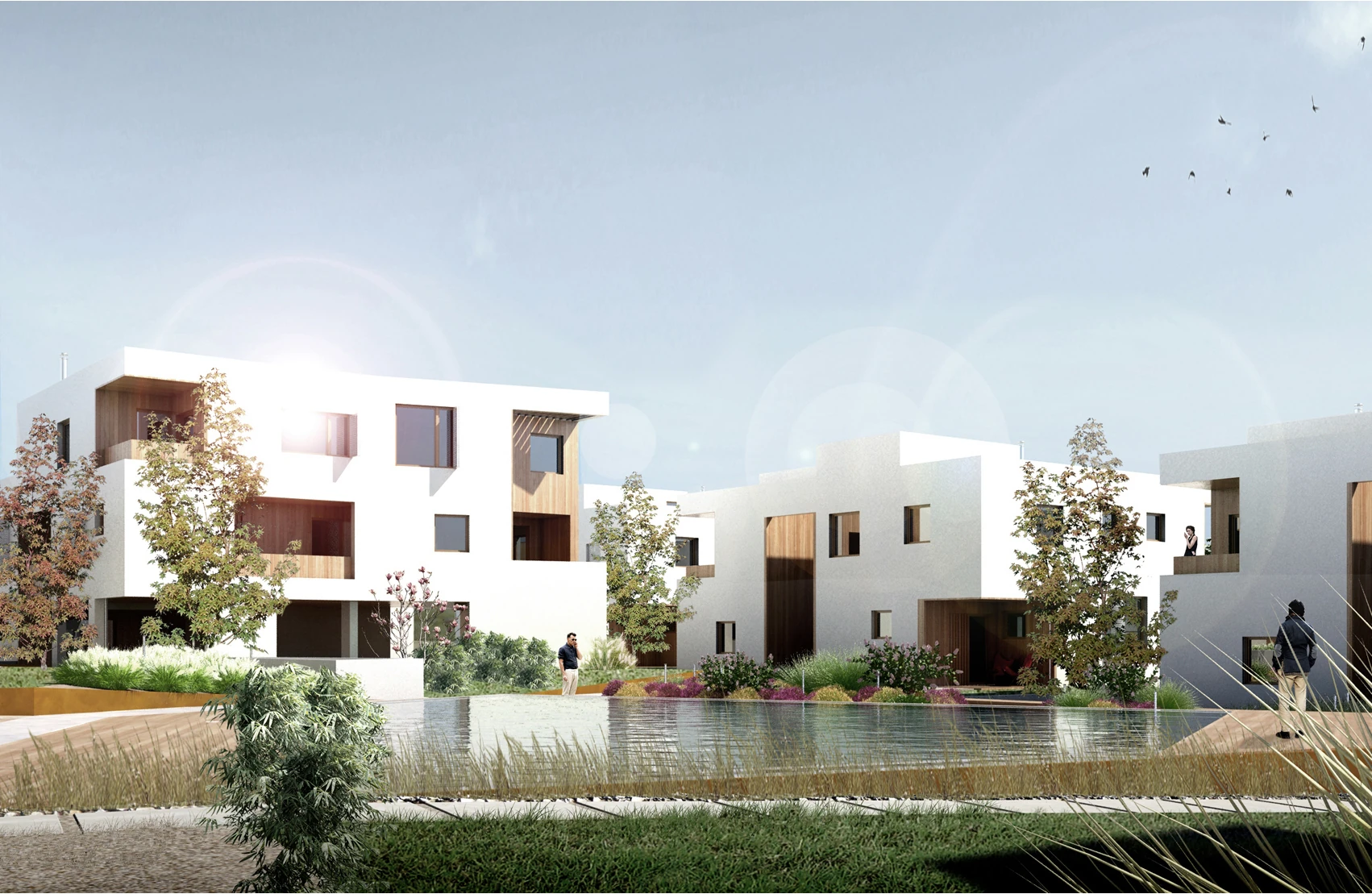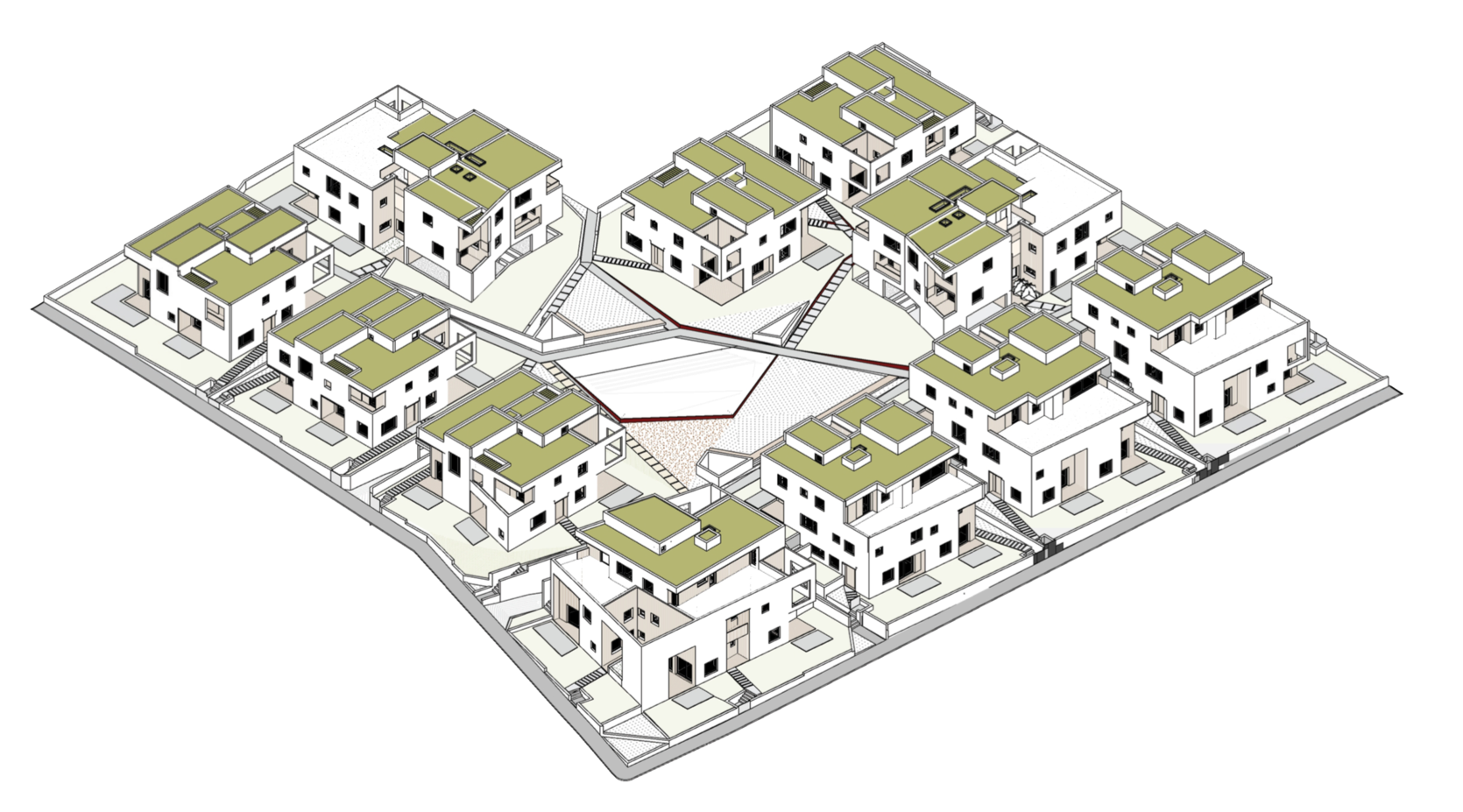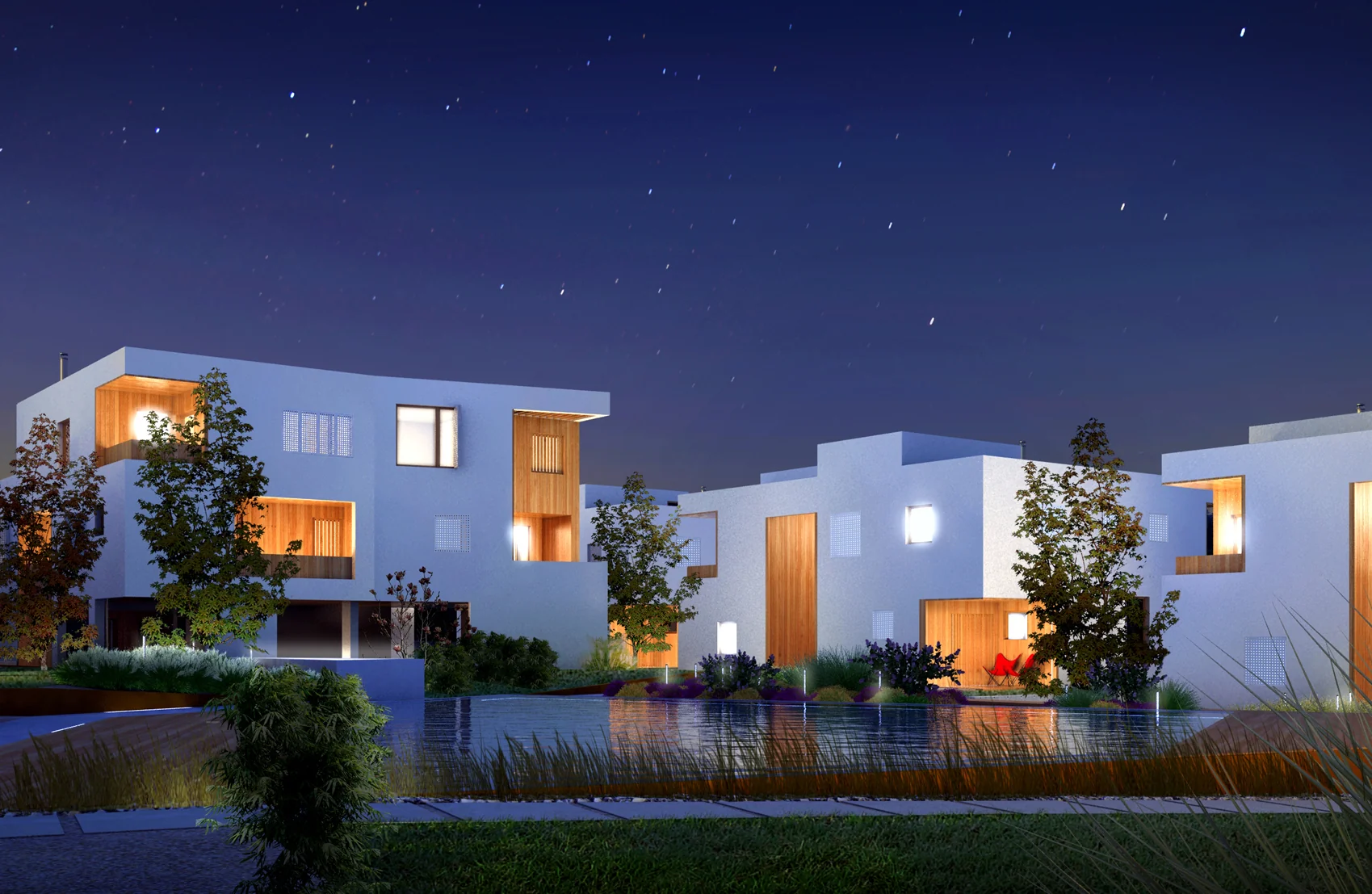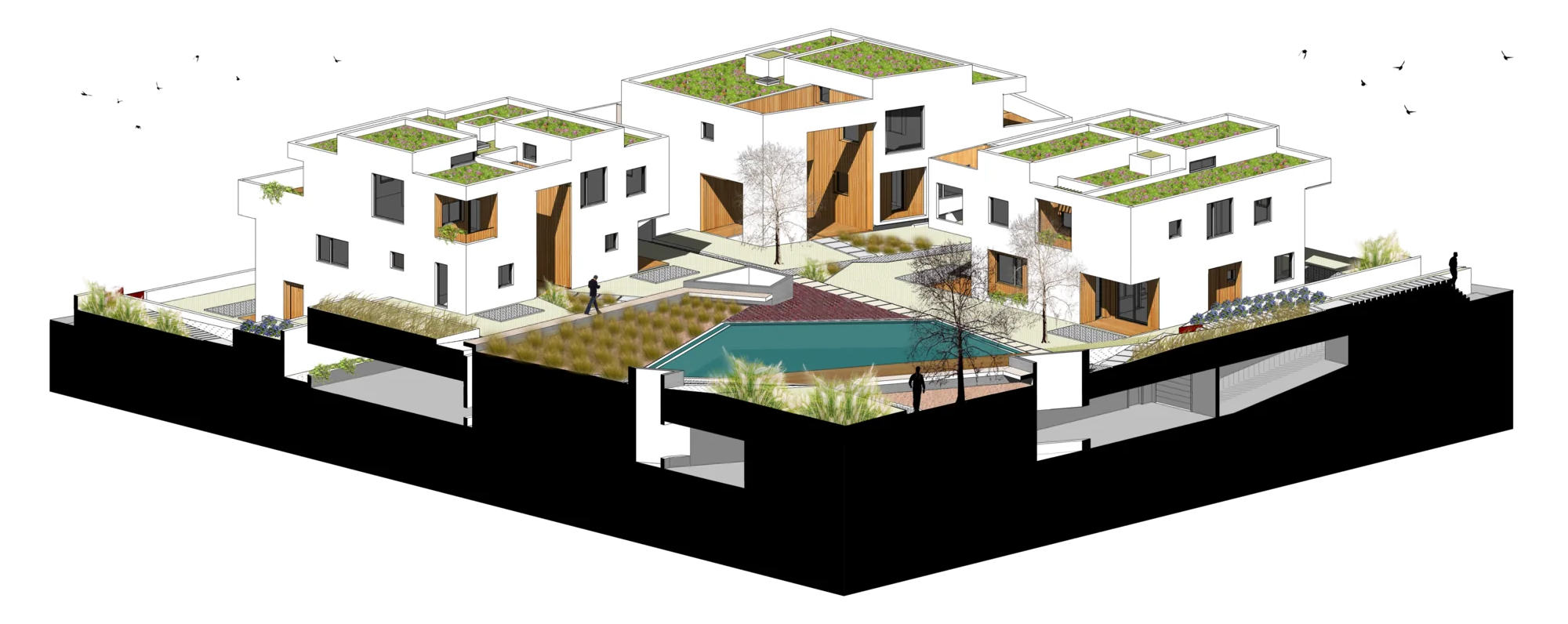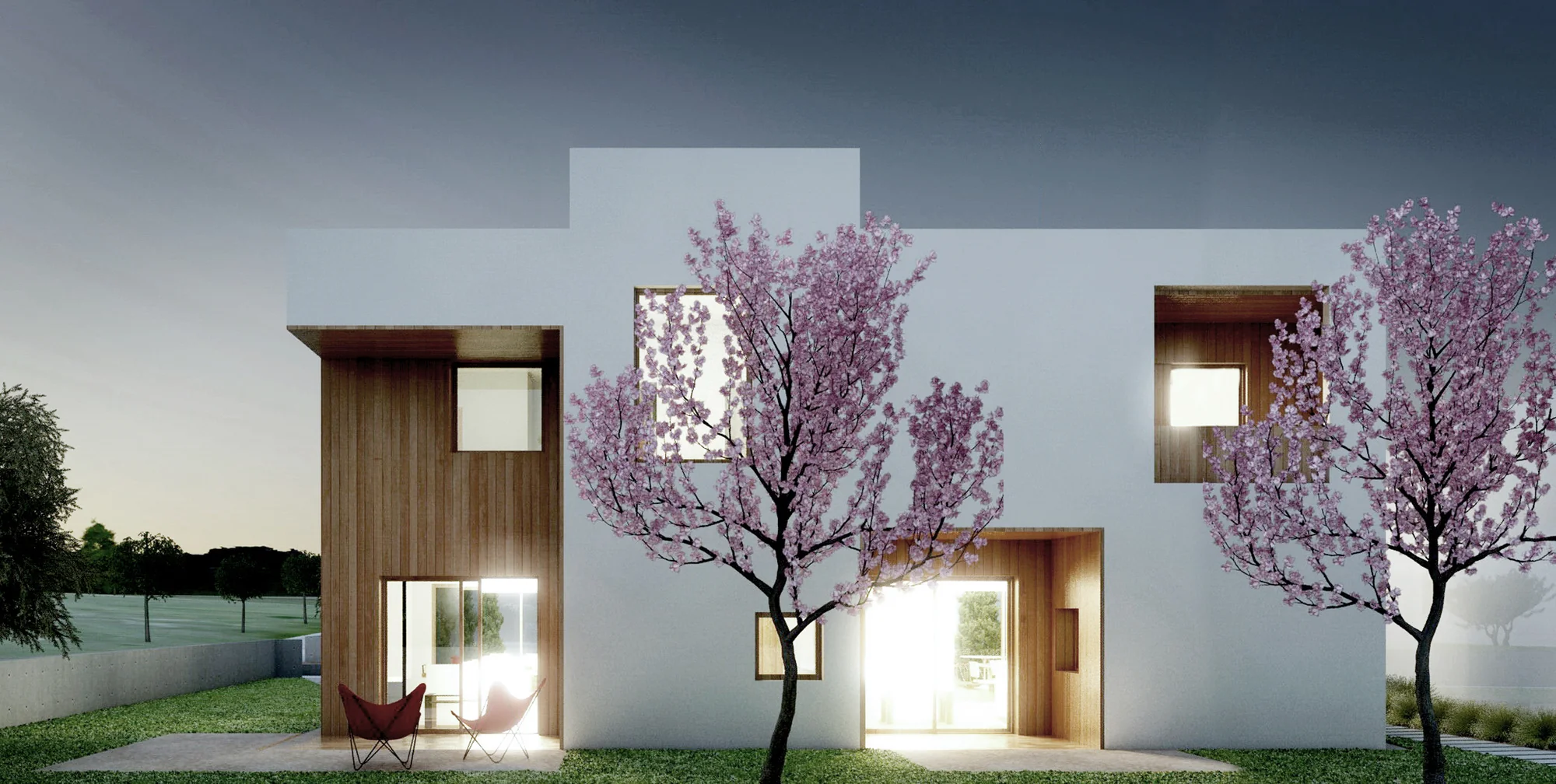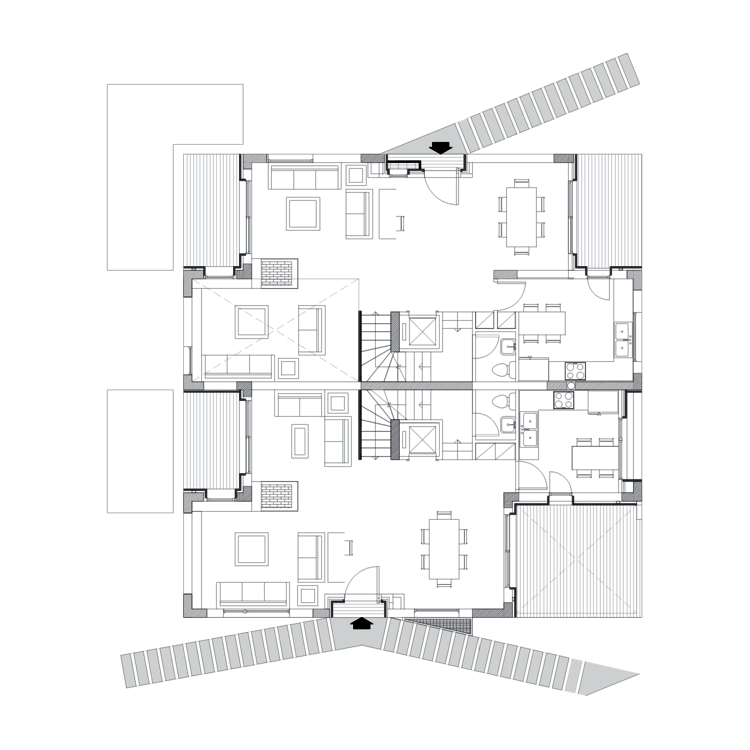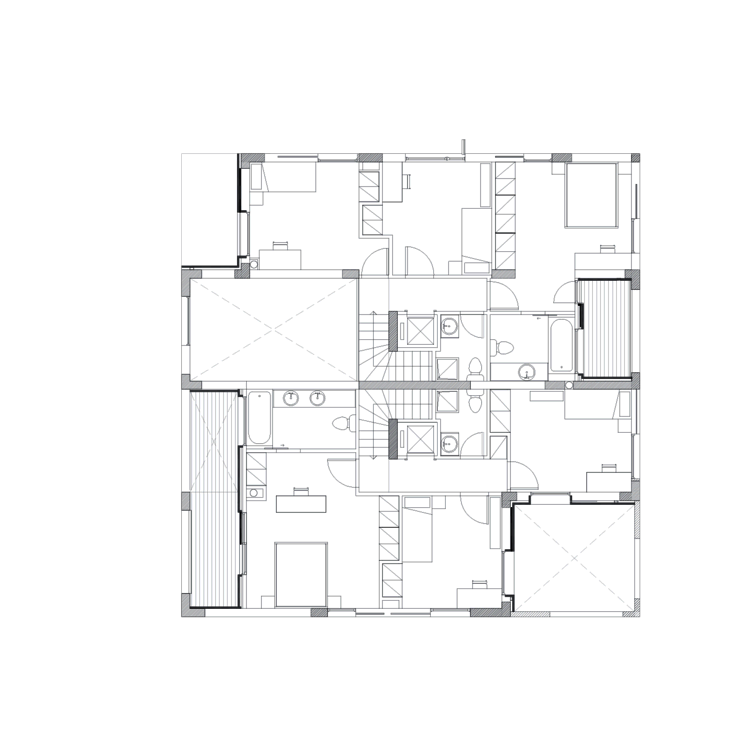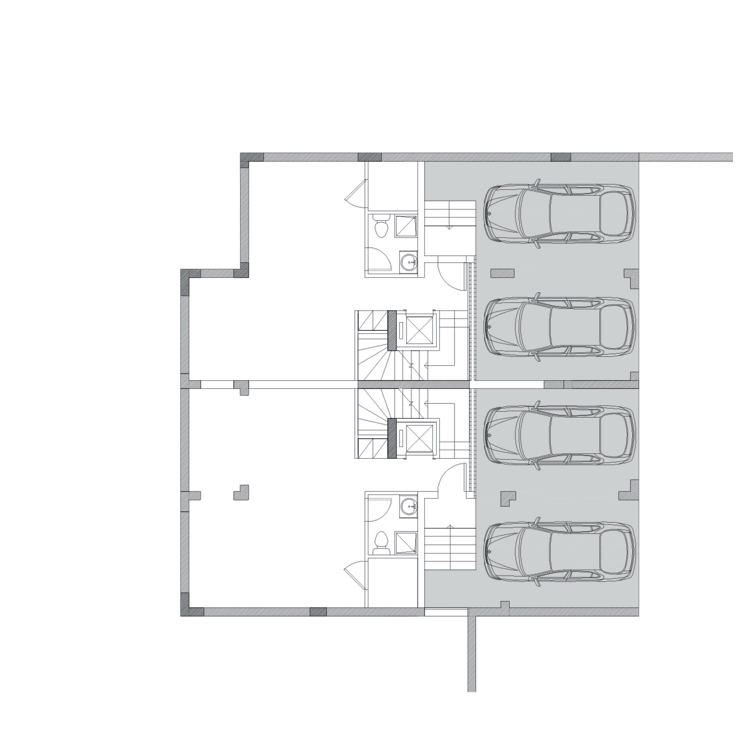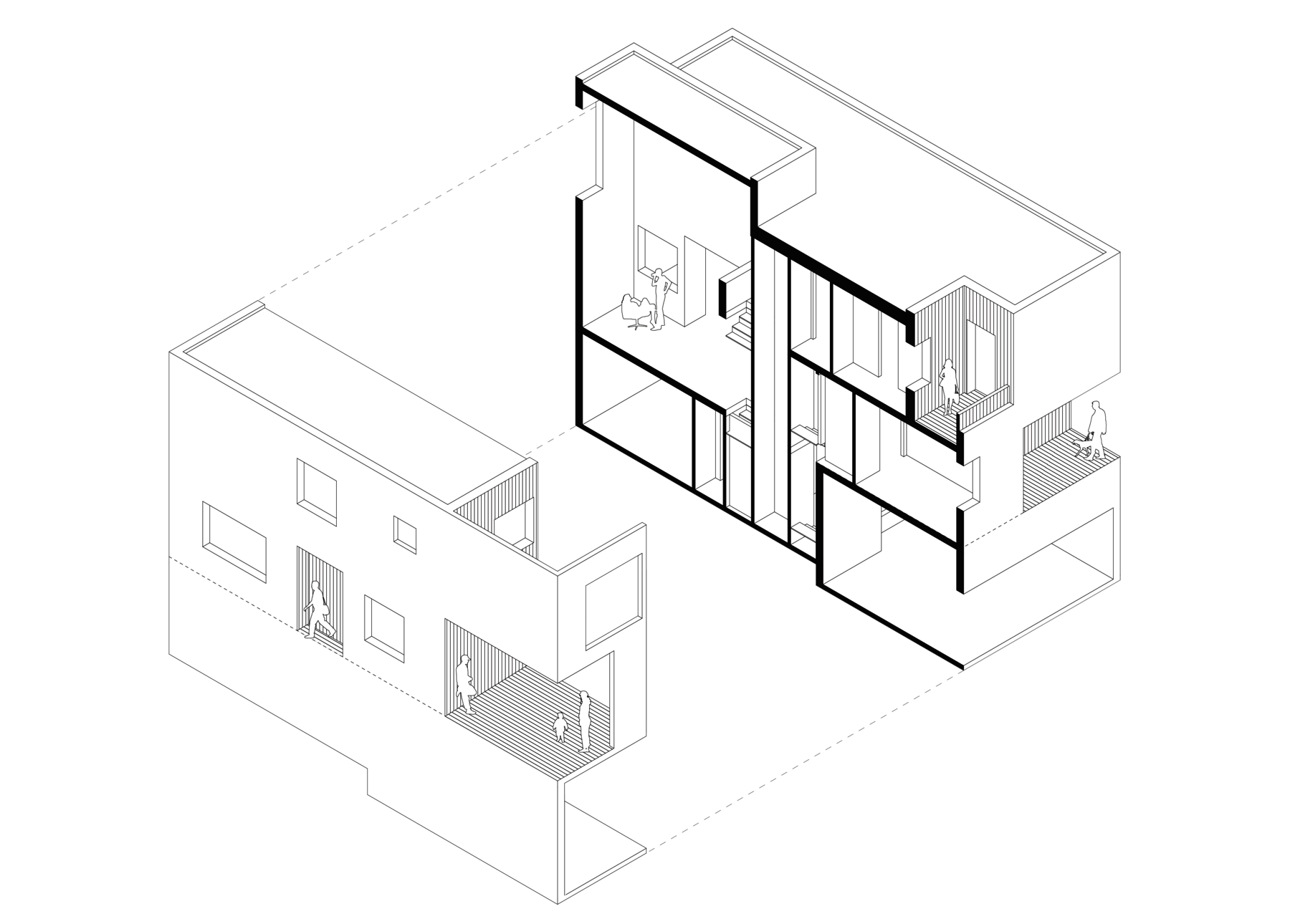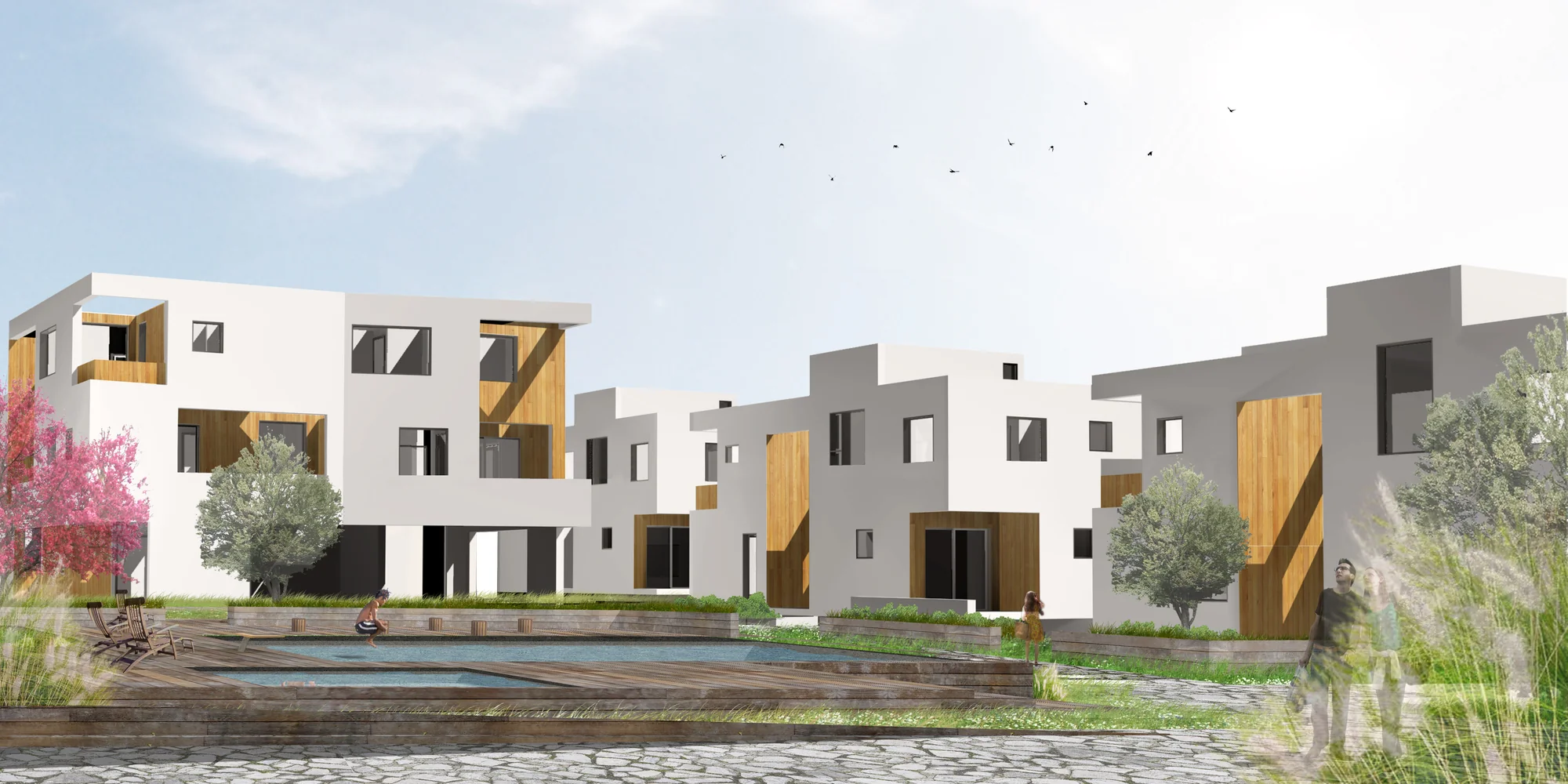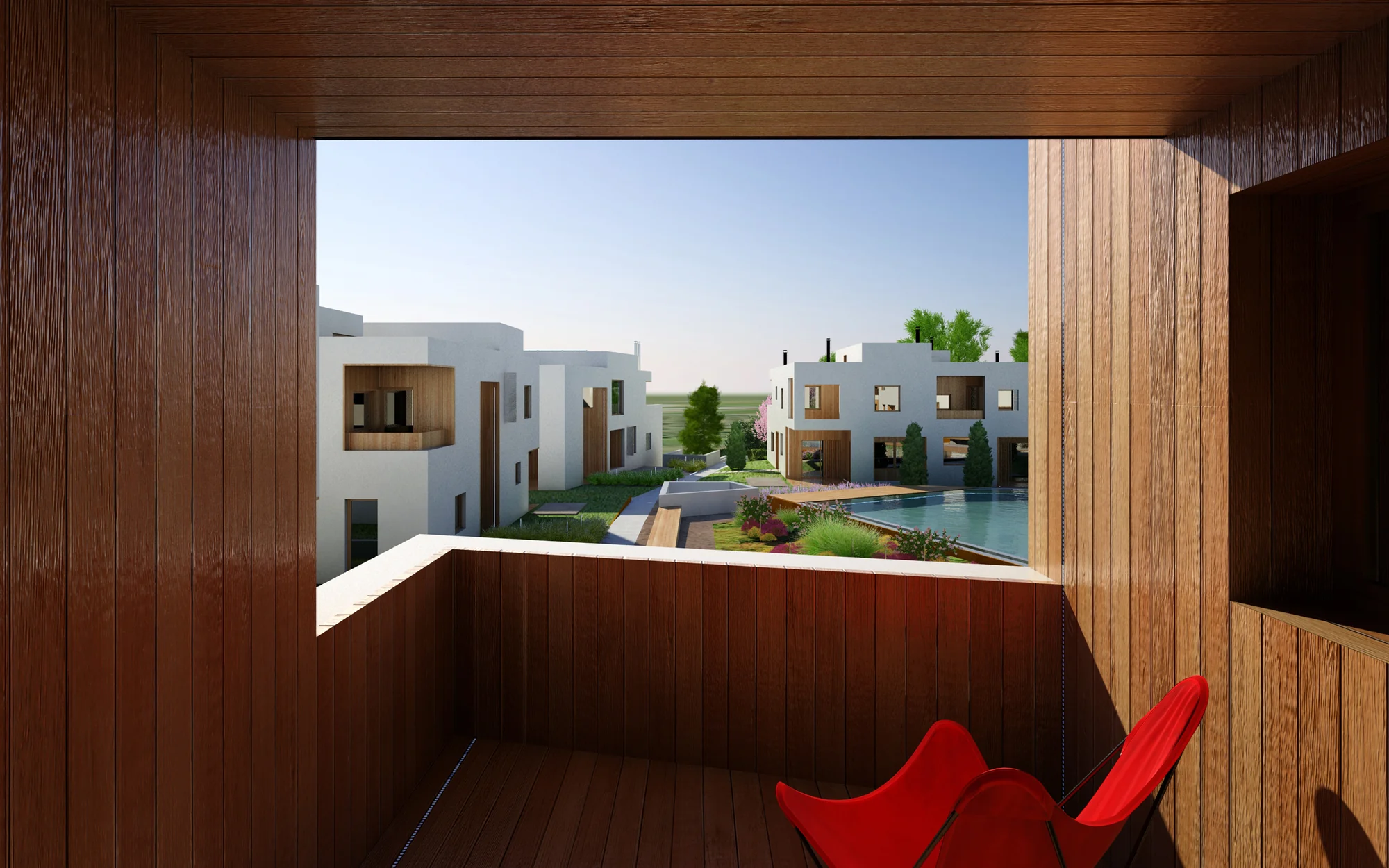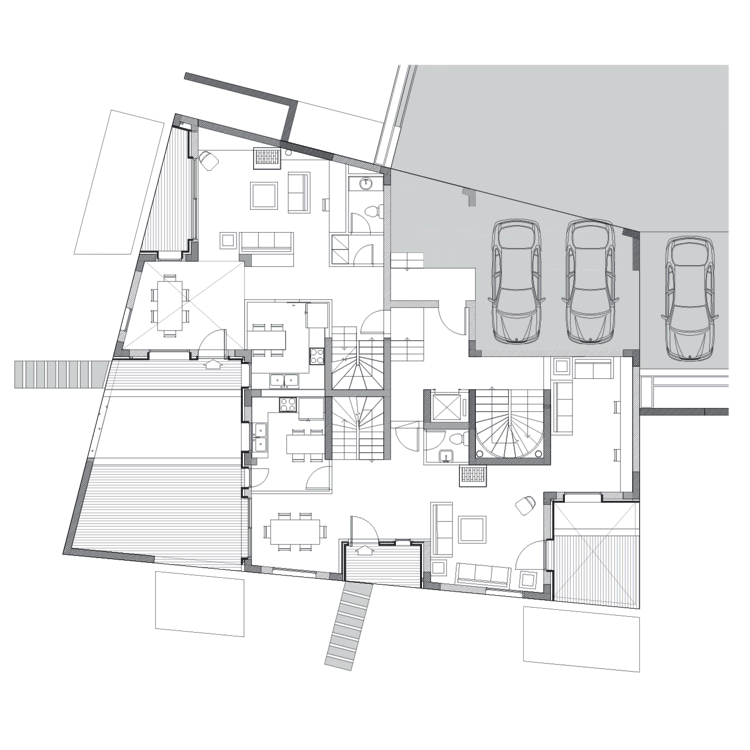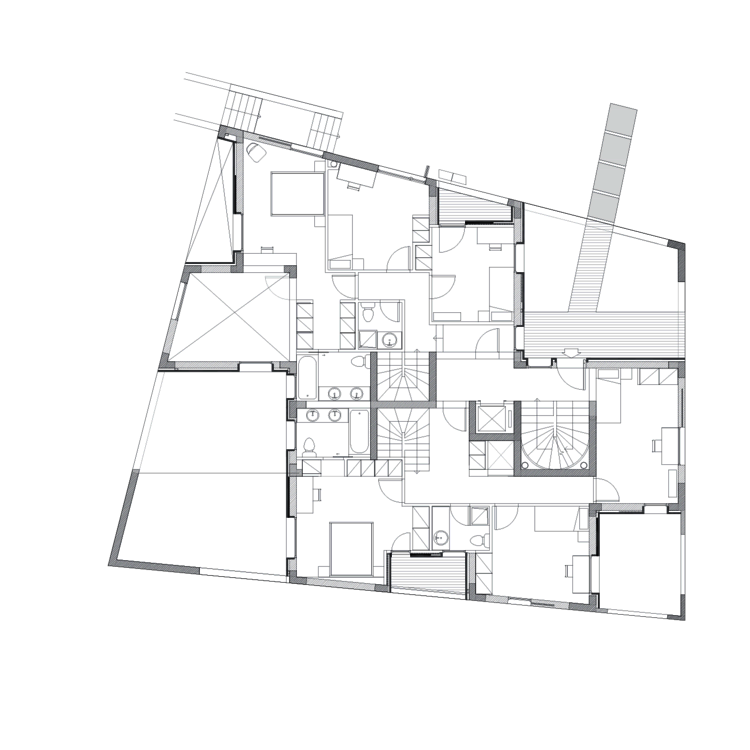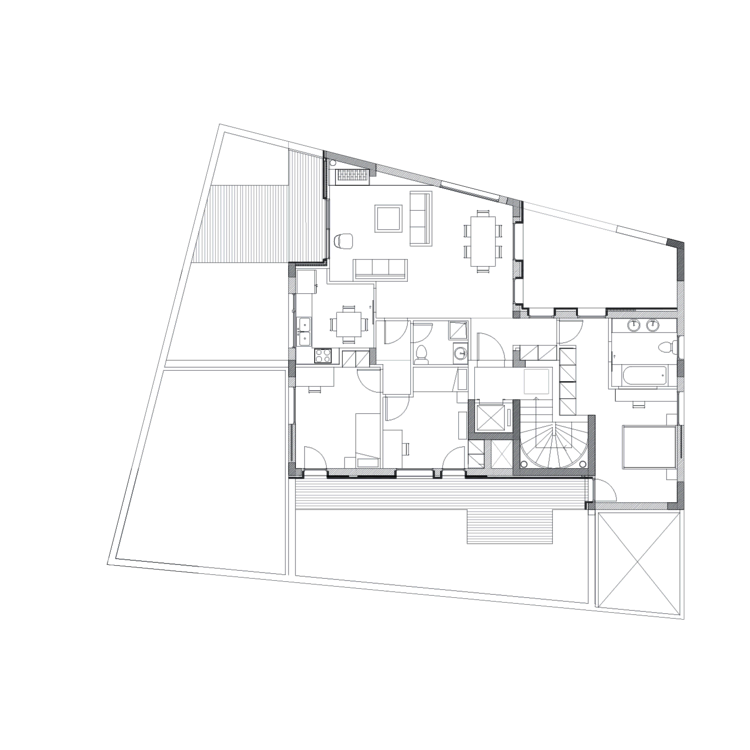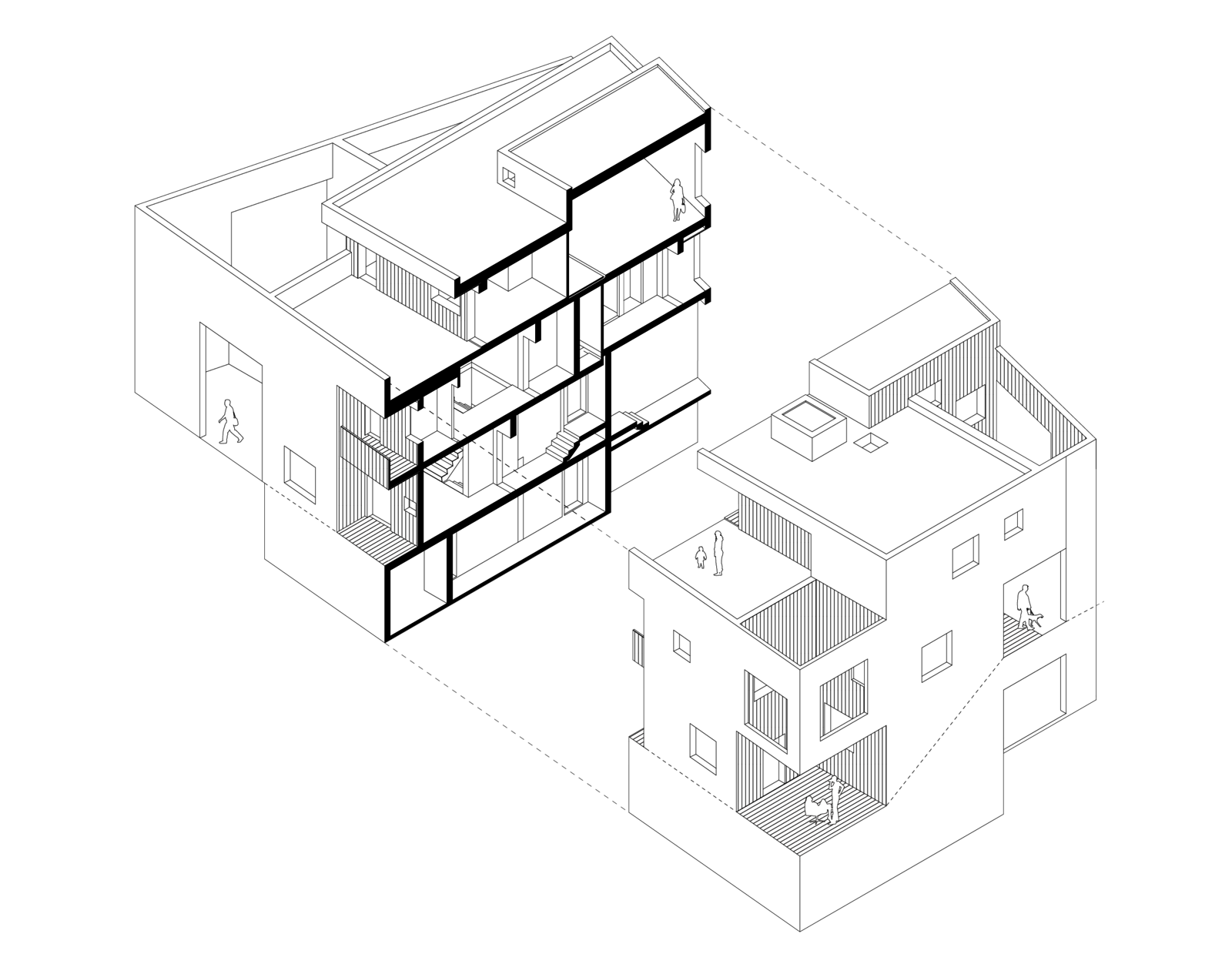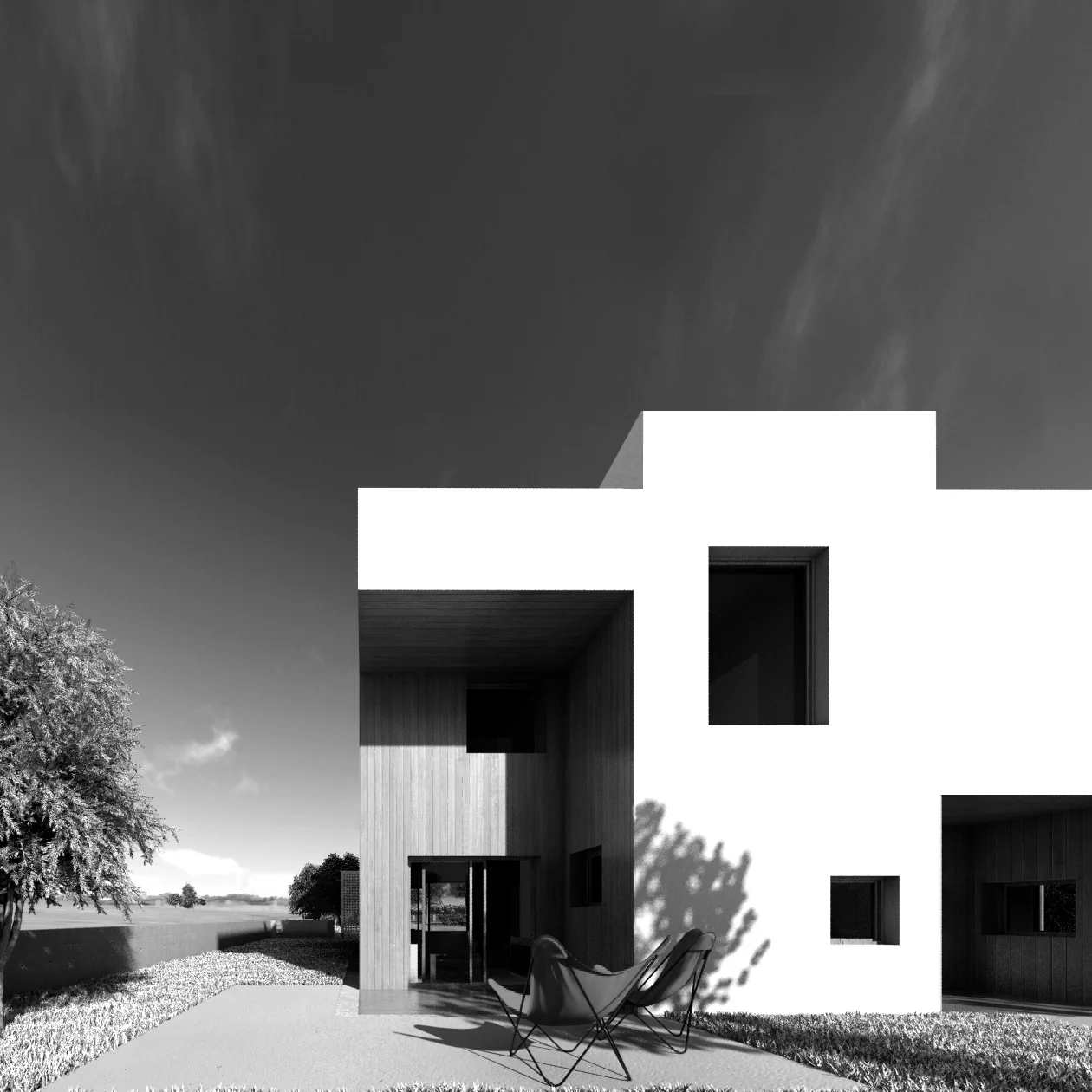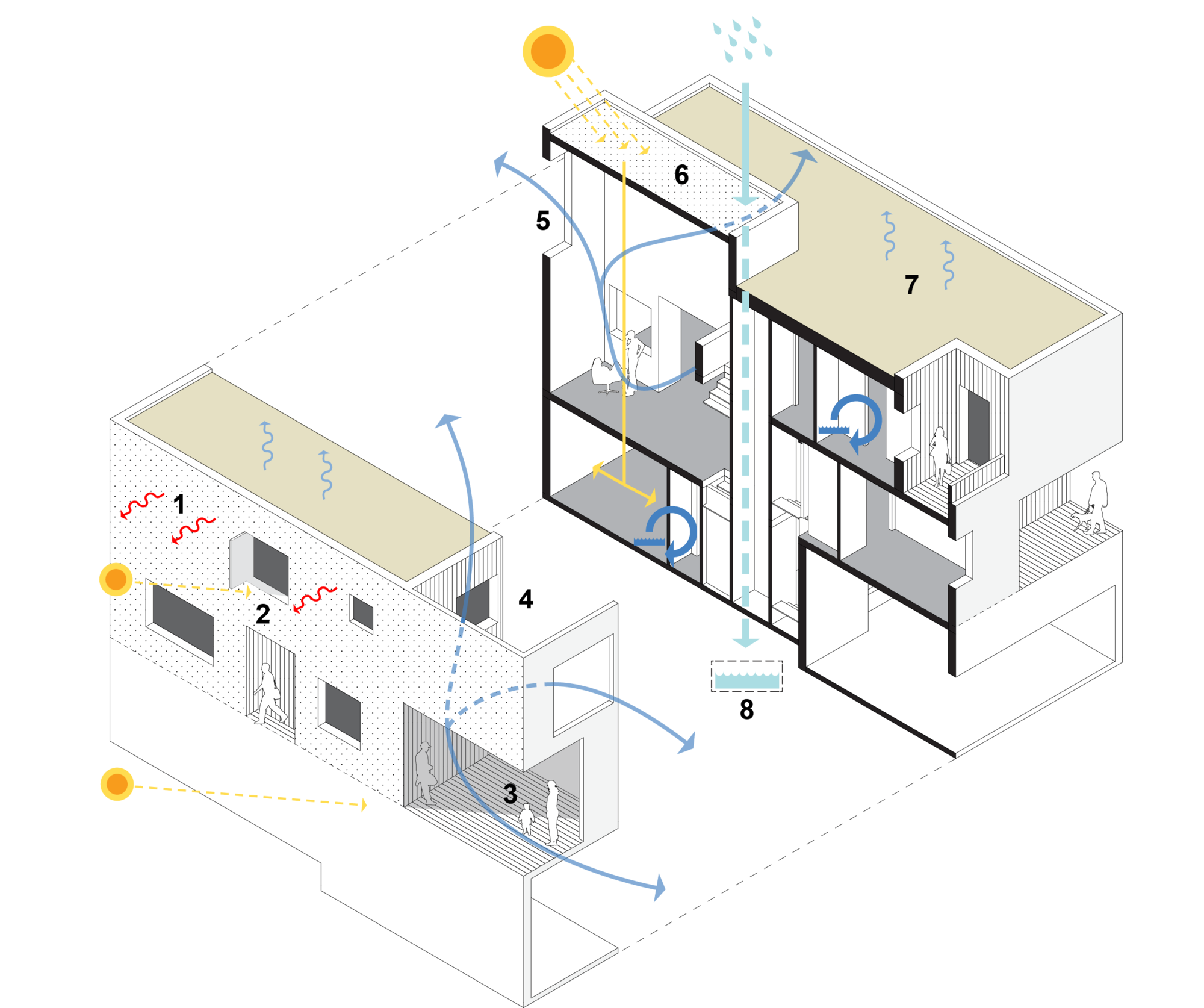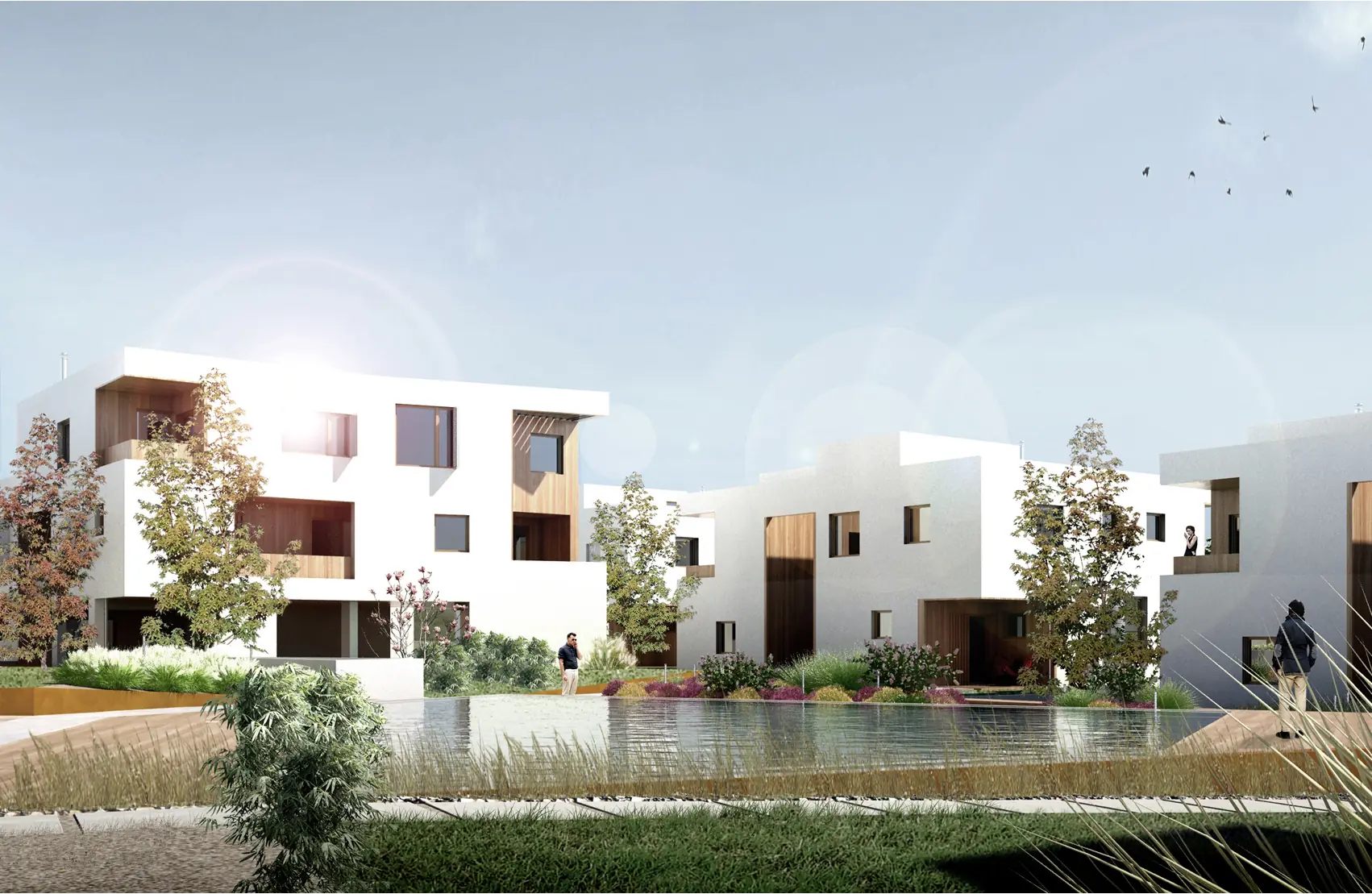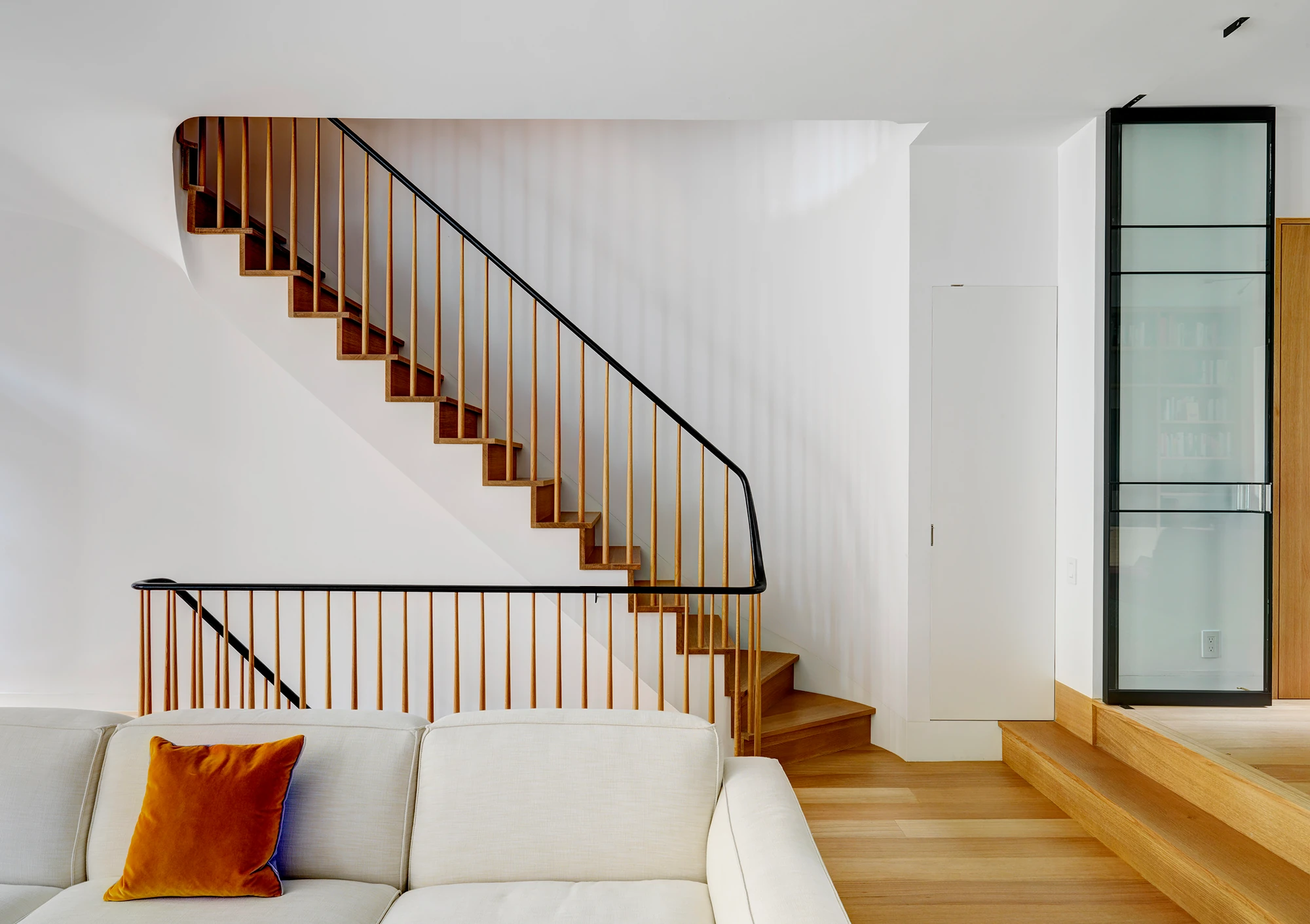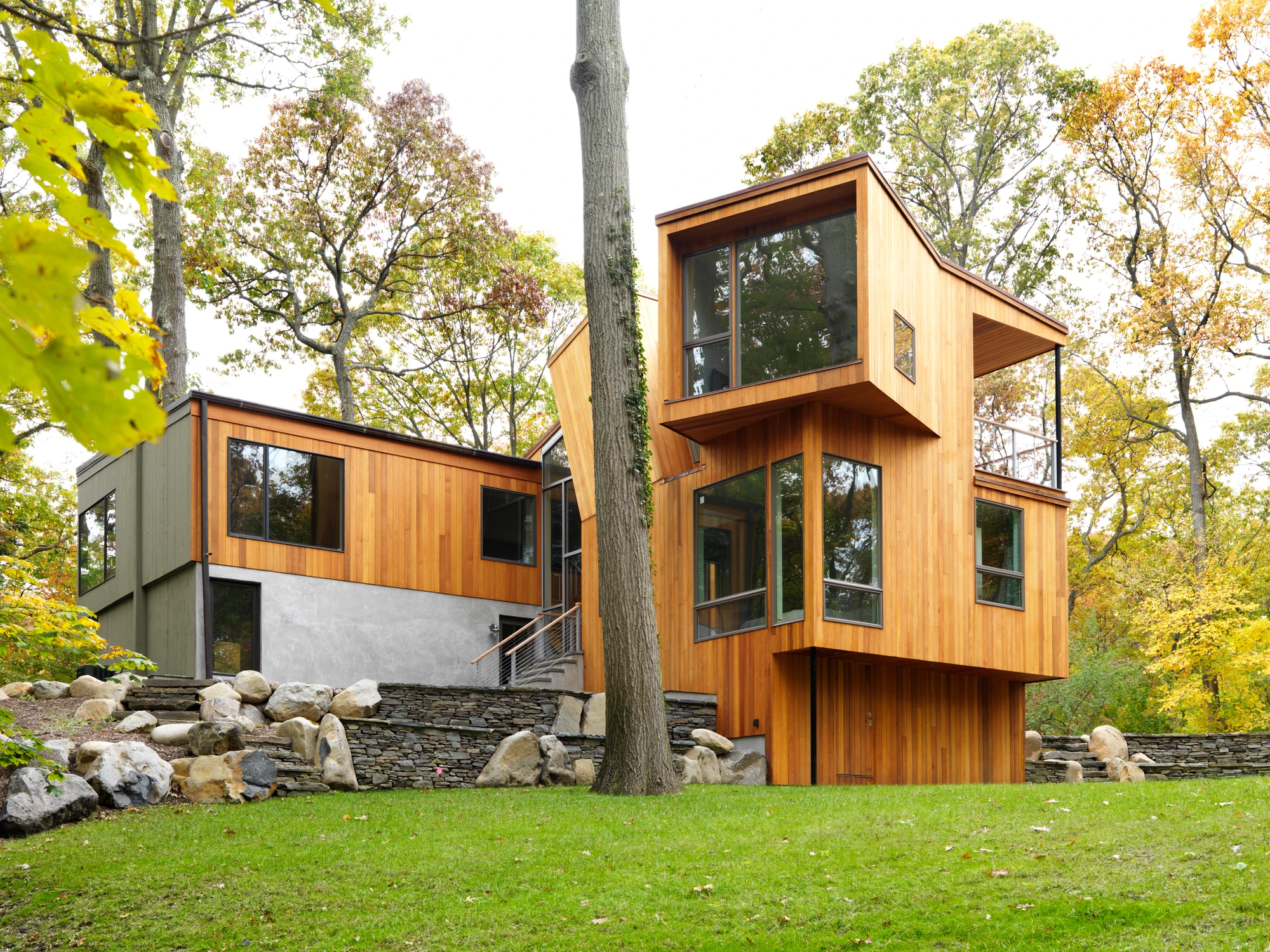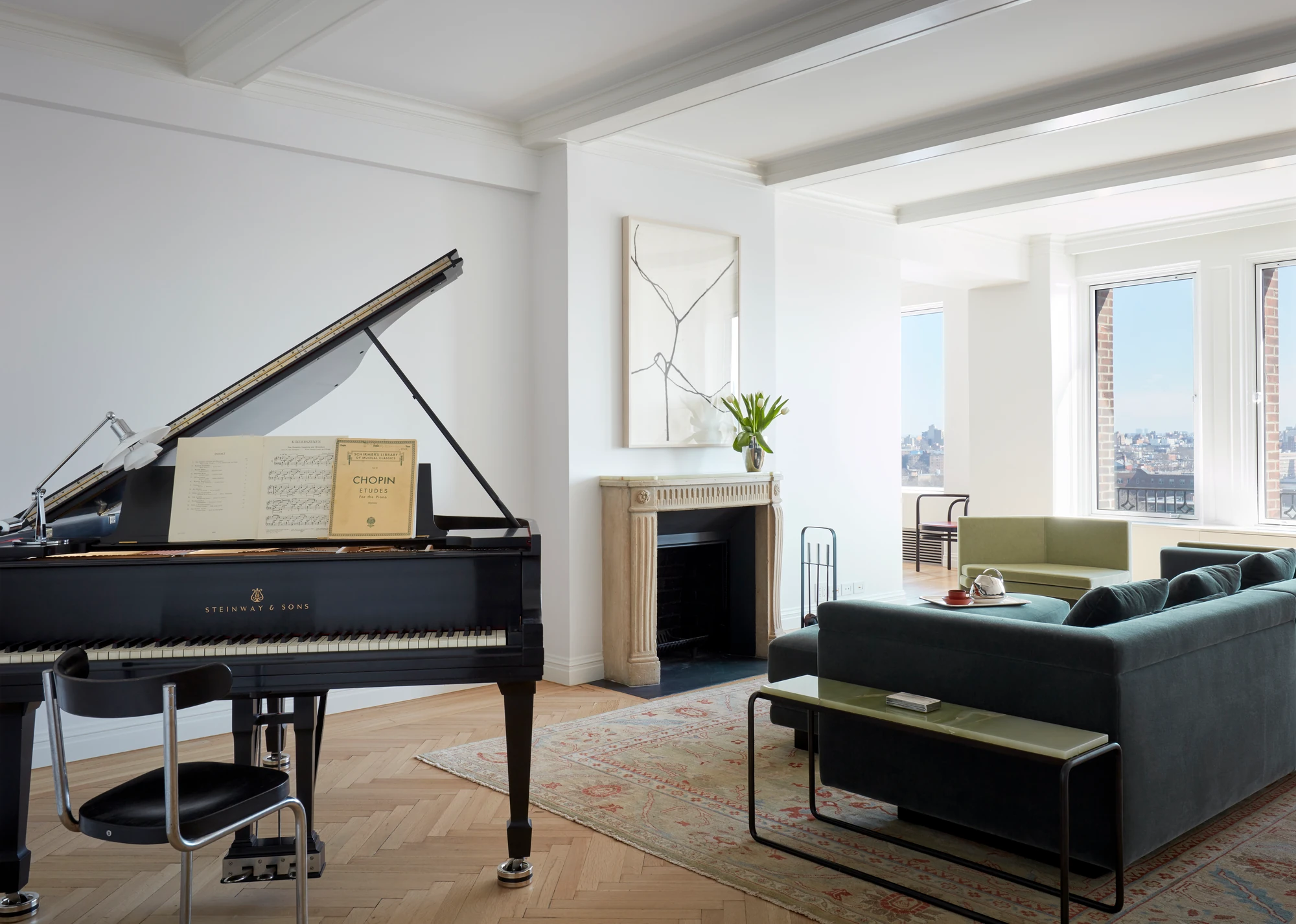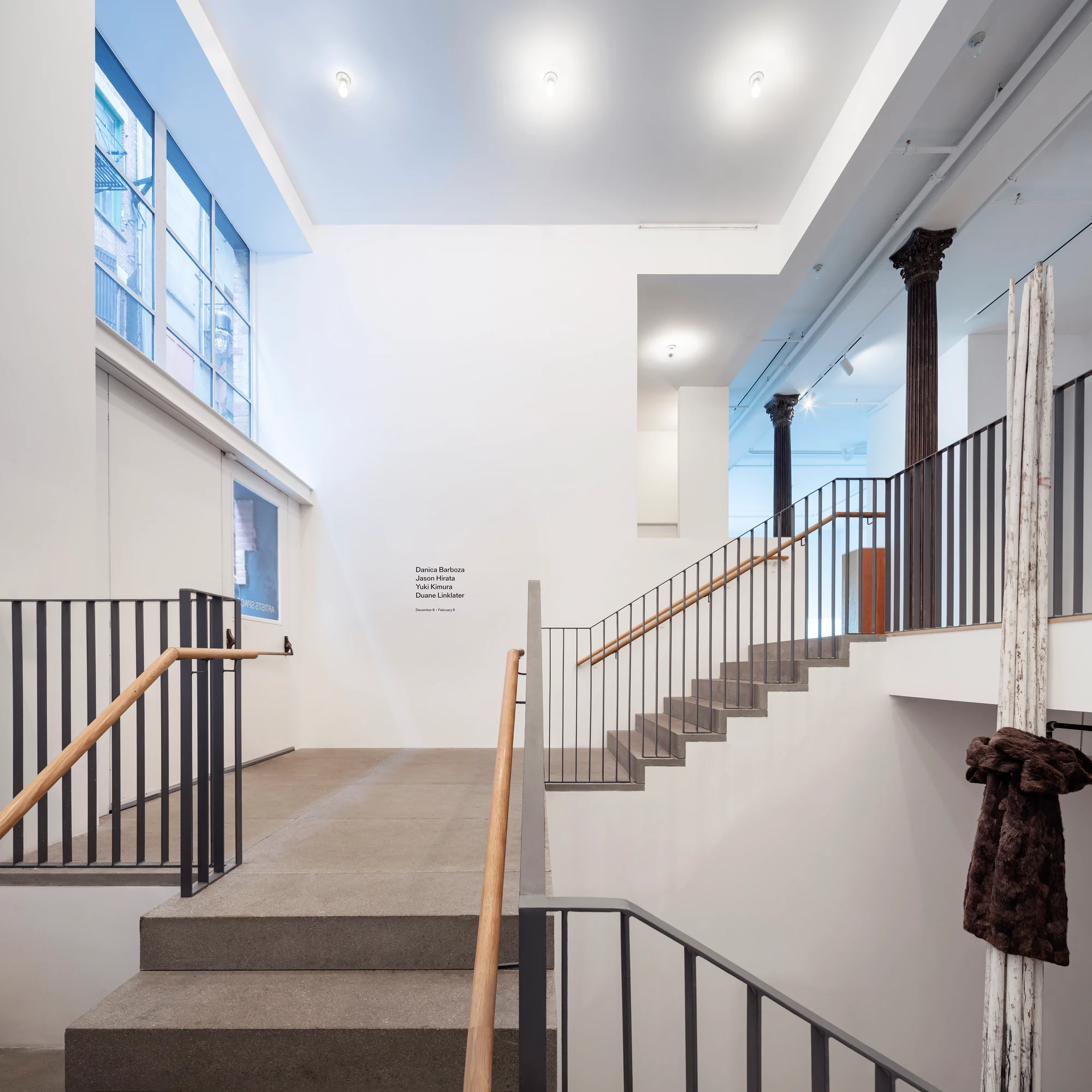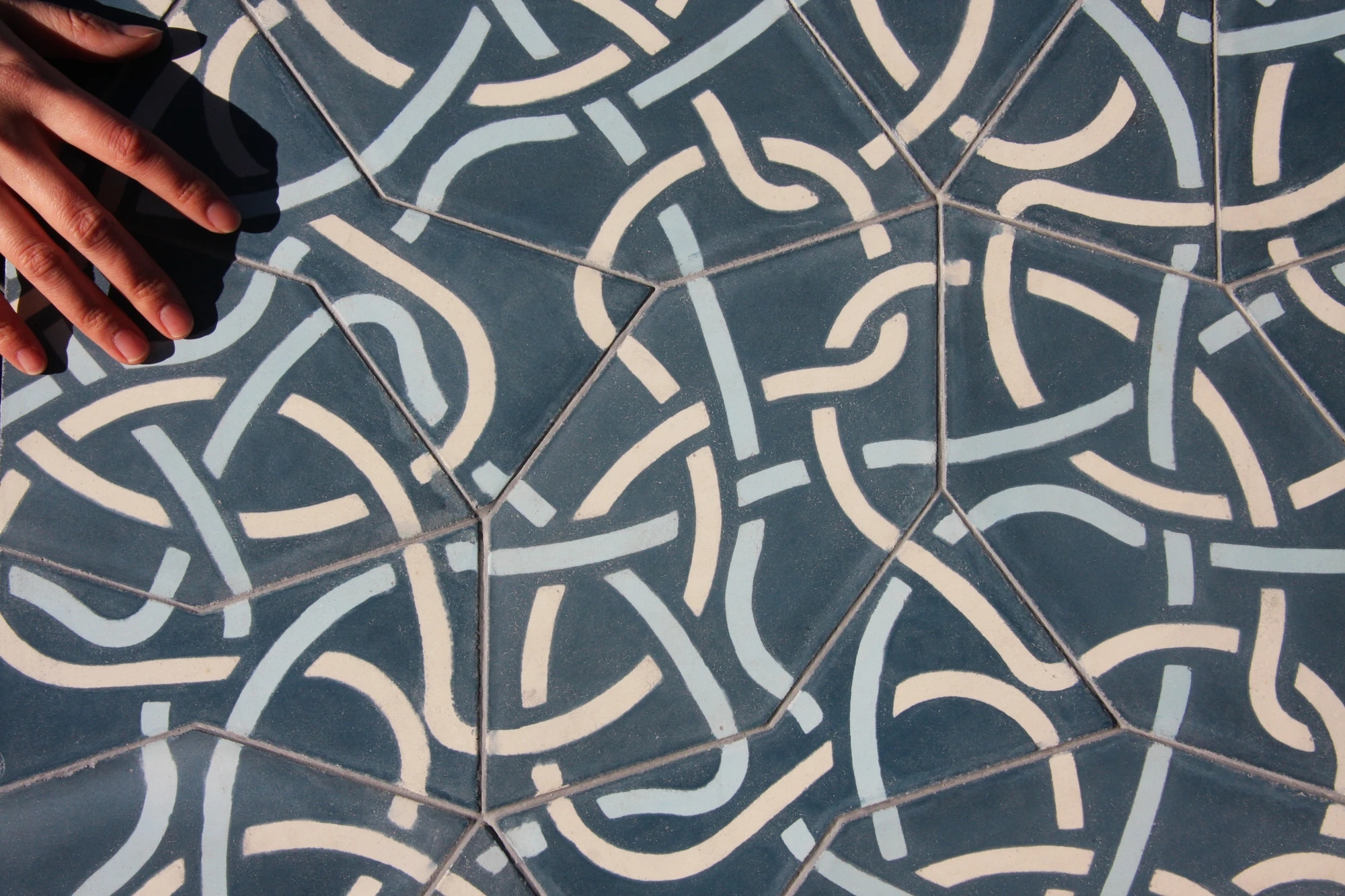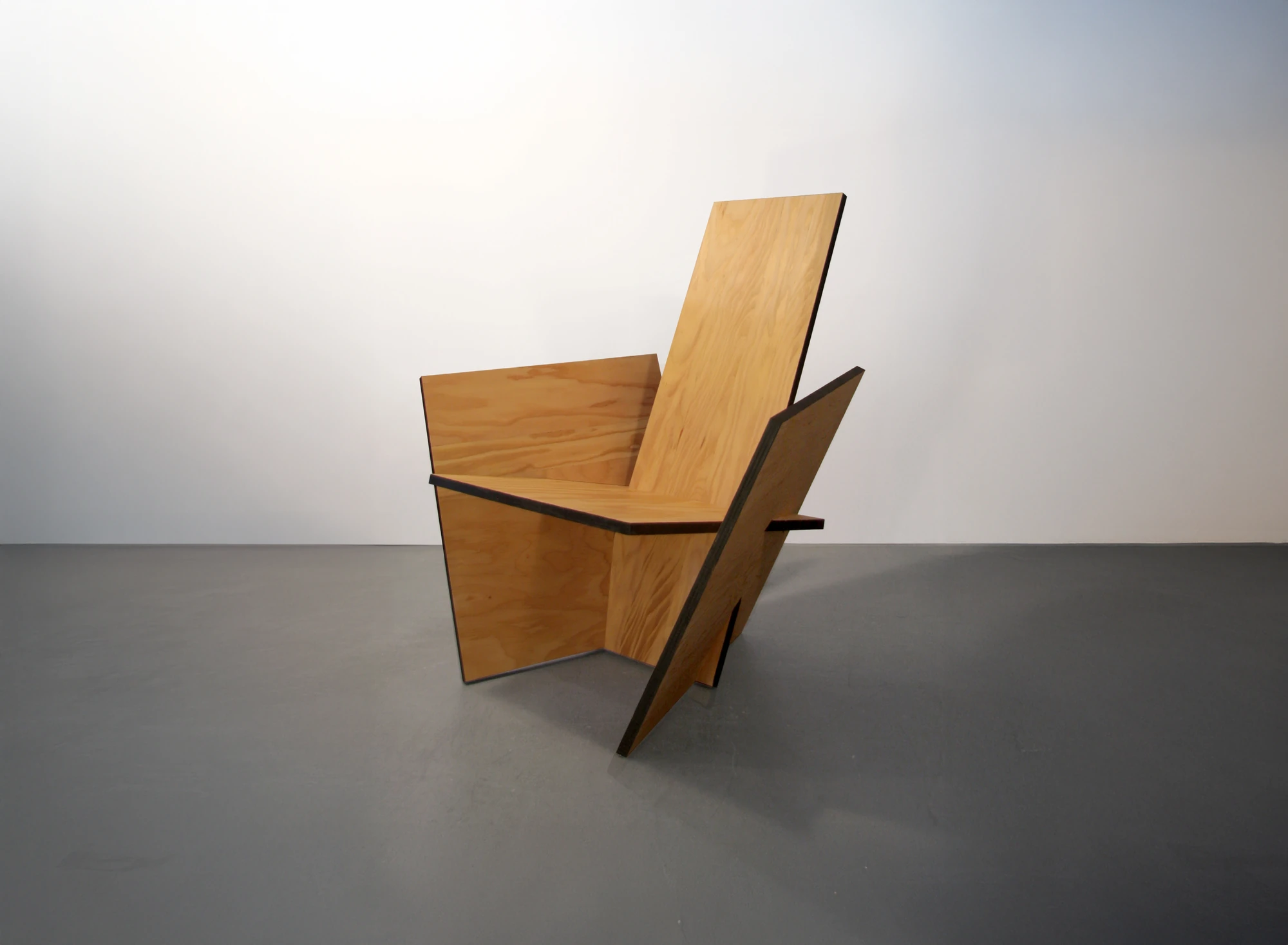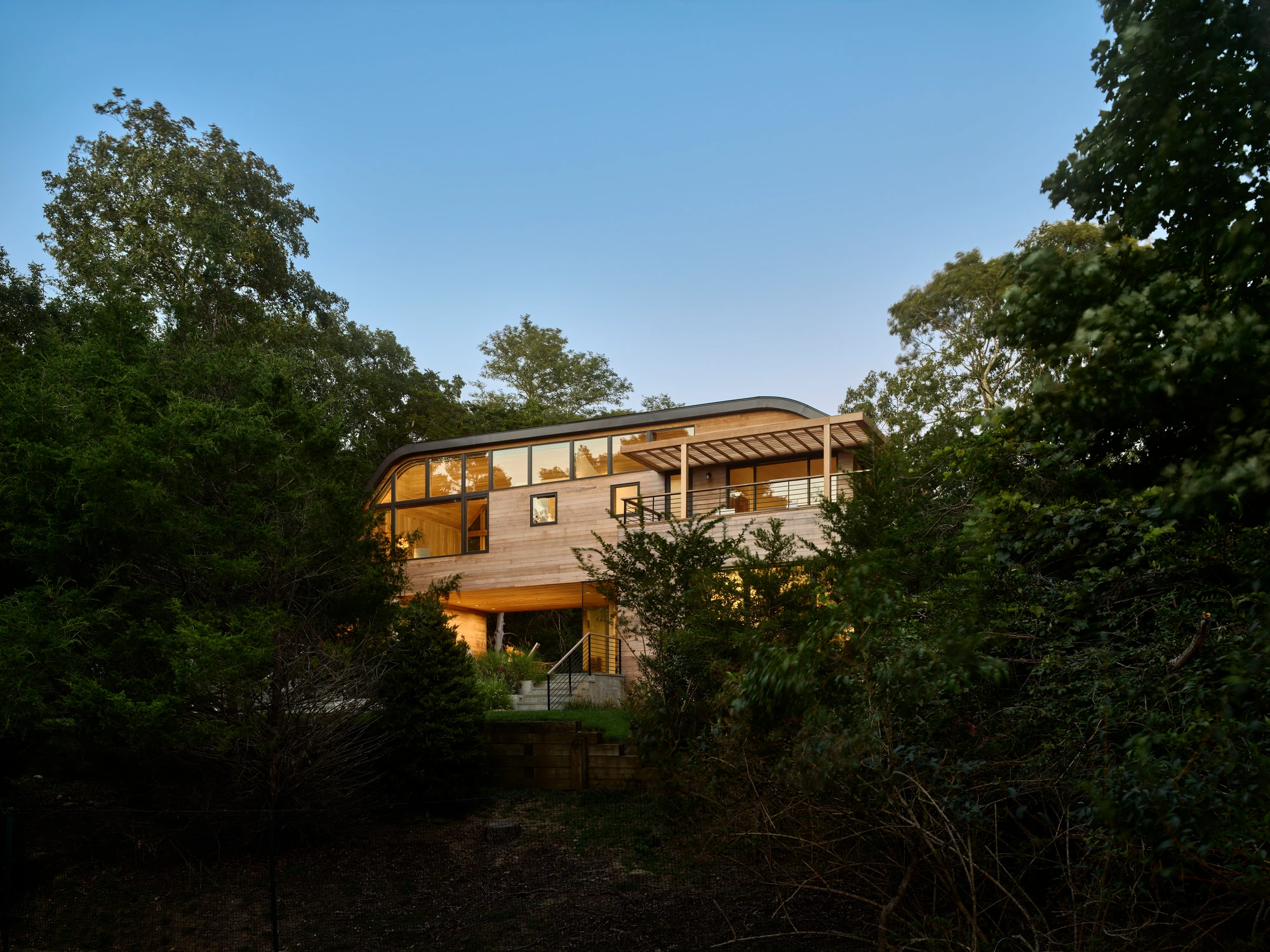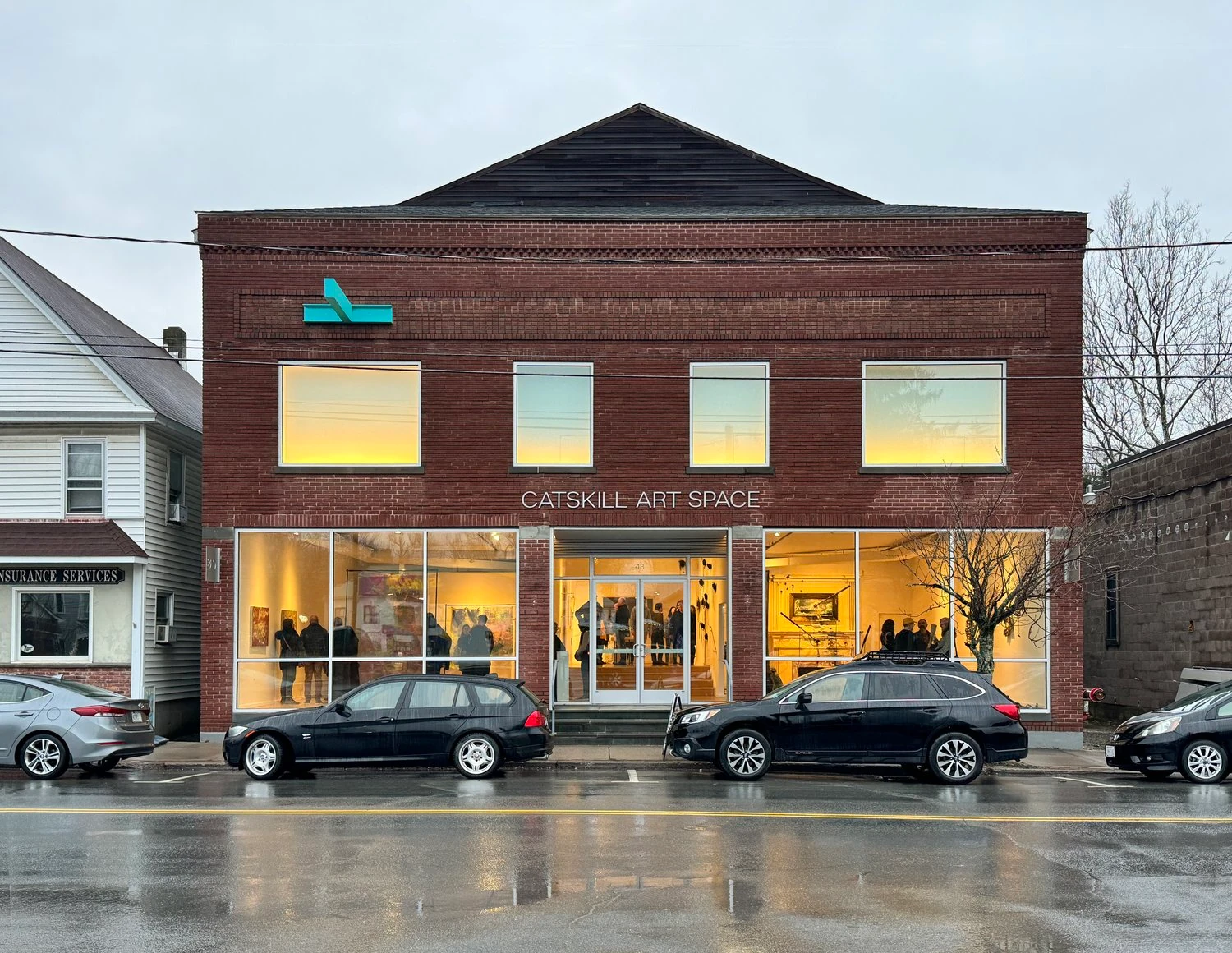Thessaloniki, Greece
A 42-unit housing project in an urban neighborhood of Thessaloniki, Greece, was sustainably designed to create a cool and private green open space in the city, while maintaining privacy for the individual units.
The apartments are organized into three-story tall cubic forms along the site’s street edges to free up the site’s interior space. The cubic forms of the apartments are carved to allow controlled light, air, and views into the units. The voids carved from the concrete walls are sheathed in sustainably forested sawn cedar.
Each apartment has its own outdoor space, entrances on different levels of the sloping site, and at least three exterior exposures for daylighting and cross ventilation. Corner terraces and openings with operable shading devices provide controlled daylight in each unit, informed by solar gain analysis using sun-tracking software. Units have double height volumes that function as thermal chimneys, with low windows on the windward side and high windows on the leeward side for natural ventilation. The apartments are designed to be light-filled, yet private and naturally cooled.
The landscape is designed to reduce the heat-island effect with shade trees and green roofs planted with local sedum. Pathways provide access to the entire site, with forked shortcuts of gravel leading to privately-owned spaces. The layered landscape offers multiple pathways for a variety of spatial experiences.
Using regionally available materials, the design focuses on abstract qualities of geometry, space, and light to create a sustainable community around a central courtyard with shared amenities.
1 / Masonry exteriors take advantage of thermal lag to warm the apartments at night, and keep them cool during the day.
2 / Deep-set windows with shutters provide shading from the high and low summer sun.
3 / Outdoor rooms are positioned to capture low winter sun, but provide shade in the summer.
4 / Each unit has a minimum of three exposures for natural daylighting and to capture prevailing breezes for natural ventilation.
5 / Most units have a double height volume that can be used for stack effect ventilation. Low windows on the windward side and high windows on the leeward side encourage fresh air circulation, even when the air is still.
6 / Roof mounted solar collectors are used to provide hot water.
7 / Green roofs improve the site microclimate and provide additional acoustic and thermal insulation for the dwelling units.
8 / Underground cisterns collect rainwater for landscape irrigation.
1 / Masonry exteriors take advantage of thermal lag to warm the apartments at night, and keep them cool during the day.
2 / Deep-set windows with shutters provide shading from the high and low summer sun.
3 / Outdoor rooms are positioned to capture low winter sun, but provide shade in the summer.
4 / Each unit has a minimum of three exposures for natural daylighting and to capture prevailing breezes for natural ventilation.
5 / Most units have a double height volume that can be used for stack effect ventilation. Low windows on the windward side and high windows on the leeward side encourage fresh air circulation, even when the air is still.
6 / Roof mounted solar collectors are used to provide hot water.
7 / Green roofs improve the site microclimate and provide additional acoustic and thermal insulation for the dwelling units.
8 / Underground cisterns collect rainwater for landscape irrigation.
1 / Masonry exteriors take advantage of thermal lag to warm the apartments at night, and keep them cool during the day.
2 / Deep-set windows with shutters provide shading from the high and low summer sun.
3 / Outdoor rooms are positioned to capture low winter sun, but provide shade in the summer.
4 / Each unit has a minimum of three exposures for natural daylighting and to capture prevailing breezes for natural ventilation.
5 / Most units have a double height volume that can be used for stack effect ventilation. Low windows on the windward side and high windows on the leeward side encourage fresh air circulation, even when the air is still.
6 / Roof mounted solar collectors are used to provide hot water.
7 / Green roofs improve the site microclimate and provide additional acoustic and thermal insulation for the dwelling units.
8 / Underground cisterns collect rainwater for landscape irrigation.
1 / Masonry exteriors take advantage of thermal lag to warm the apartments at night, and keep them cool during the day.
2 / Deep-set windows with shutters provide shading from the high and low summer sun.
3 / Outdoor rooms are positioned to capture low winter sun, but provide shade in the summer.
4 / Each unit has a minimum of three exposures for natural daylighting and to capture prevailing breezes for natural ventilation.
5 / Most units have a double height volume that can be used for stack effect ventilation. Low windows on the windward side and high windows on the leeward side encourage fresh air circulation, even when the air is still.
6 / Roof mounted solar collectors are used to provide hot water.
7 / Green roofs improve the site microclimate and provide additional acoustic and thermal insulation for the dwelling units.
8 / Underground cisterns collect rainwater for landscape irrigation.
Design Team
Timothy Bade (principal-in-charge)
Jane Stageberg
Martin Cox
Leonidas Trampoukis
Eleni Petaloti
Design Team
Timothy Bade (principal-in-charge)
Jane Stageberg
Martin Cox
Leonidas Trampoukis
Eleni Petaloti
Design Team
Timothy Bade (principal-in-charge)
Jane Stageberg
Martin Cox
Leonidas Trampoukis
Eleni Petaloti
Design Team
Timothy Bade (principal-in-charge)
Jane Stageberg
Martin Cox
Leonidas Trampoukis
Eleni Petaloti
Awards
DOMES International Review of Architecture
